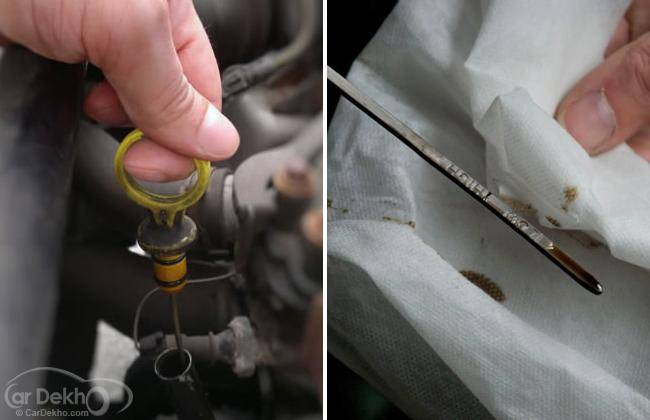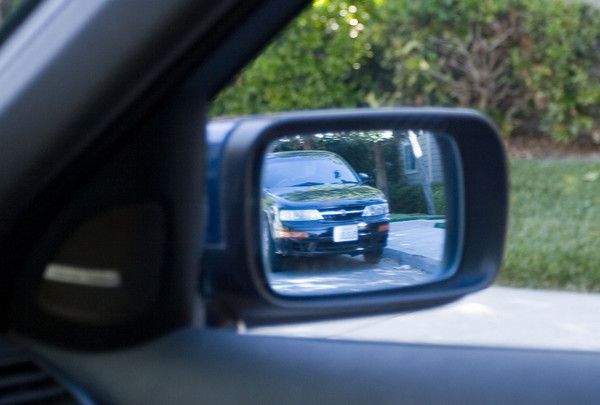Tips for Driving on the Highway
Modified On Oct 05, 2012 01:09 PM By CarDekho for Bugatti Veyron
- 5.5K Views
- Write a comment
Driving on a highway is quite possibly one of the best times to relax your mind and enjoy the scenery, particularly in India. And since almost all city dwellers have, at some point, the need to get on the highway to visit distant relations or for business trips, we have decided to bring to you a few tips about driving on a highway, the preparations to make, things to keep in mind and safety tips.Preparations: Before you set out on your long journey, you will need to check-up on a few things to make sure you don't have any trouble on the road as there is a good likelihood you won’t find many repair centres on the way. Here is a list of a few preparations you should always make before the start of a long highway journey.

Oil Check-up
Since you will be relying completely on your vehicle to take you from point A to point B, a thorough check-up of the engine is a must. Doing so will save you unnecessary stops at a repair centre on the way in case you find trouble on the highway.

Brake check-up
A brake check-up is another thing to keep in mind. Highway driving is usually fast paced and the last thing you want are worn down or malfunctioning brakes as this may lead to serious injuries or even death.

Tyre pressure
Tyre pressure is yet another important detail, one which most people forget. Improper tyre pressure may not only cause you to lose control on the road, but it also decreases your mileage by a significant amount. So remember to fill up those tyres and conserve your fuel.

Map or Guidebook
If you are new to the area, investing in a map or guidebook is a good idea. Highways are essentially lonely places and chances are you may not always be able to find people who will point you in the right direction in case you get lost.

Charged mobile devices
Remember to charge your cellular device as you will have need of it in case of any emergencies. If your journey is going to be an extremely long one, packing an extra mobile (fully charged) may turn out to be useful as well.

Food and water
Even though most established highway routes have rest stops which serve food 24 hours a day, it may still be a good idea to get some non-perishable food items and water in case of any emergencies. Carrying a few energy drinks may not be a bad idea either.
On the highway
Now, once you are on the highway, you will need to keep a few things in mind. Most people think highway driving is a cinch compared to driving in the hustle bustle of the city. Nothing could be farther from the truth. Its true city driving requires a finesse that is not needed for the highway; however due to the high speed limits on the highway, staying safe may sometimes become a challenge. Here are a few things to keep in mind to ensure a safe and pleasurable trip.

Sight-line/Vision
The major difference between city driving and highway driving is the visibility. City driving usually requires you to keep you vision relatively close around your vehicle to ensure you avoid traffic, potholes, pedestrians etc. Highway driving on the other hand, due to the high speeds requires you to keep your sight-lines further away to ensure you have time to react in case of any emergency. Do not lose your concentration and keep scanning the oncoming traffic for any signs of a possible collision.

Consistent speeds
Maintaining a set speed is a very good idea for two major reasons. One, it will give you the maximum possible mileage your car is capable of and two; it is the best possible way to ensure your safety. A consistent speed means you will not cause undue load on your engine and at the same time it will give you plenty of time to react to any possible collisions.

Maintaining your distance
This is yet another important factor that contributes to highway accidents. People often drive in that 'bumper to bumper' fashion that they are used to doing within the city. However with higher average speeds on the highway, this becomes quite a risk. At highway speeds you may not always have the time required to come to a complete stop as quickly as in the city. And if you are drafting another vehicle closely then this is a sure recipe for disaster.

Fast lane and slow lane
Every highway has separate lanes for slow and fast drivers. Remember to stick the lane which is suitable to you and your vehicle type. If your vehicle is a large and slow moving commercial vehicle then stick to the slower lanes to avoid disrupting the drivers in the smaller faster cars. If on the other hand if you fall under the category of the smaller and faster cars, remember not to take undue advantage of it and over-speed. Highways have separate speed limits for all types of vehicles and sticking to them is in the best interest of your safety.
Overtaking
This is the perennial reason for majority of the accidents on the highway. Rash drivers want to overtake trucks and larger commercial vehicles at the first opportunity. Even the most laid-back drivers dislike being behind a large commercial vehicle that blocks their path. During the overtaking procedure remember to keep a few things in mind. Before you even move your steering in any direction, scan your mirrors for any vehicles coming from behind you. Once you are in the clear use the indicators to imply which direction you will be taking the turn in and shift to a lower gear in order to clear the distance quickly so as to not linger in the lane for longer than is safe or necessary.

Headlight Usage
If you plan on driving at night you must ensure you are using your headlights in the proper way. Most drivers enjoy the use of high beam function to indicate to other drivers. This practise though condoned in order to make drivers ahead of you aware of your presence, should never be misused. Flashing the high beam should only be done in cases where it is justified and never as a show of aggression. There is a good chance that in the relative darkness of the night time highway you will temporarily blind or impair the vision of your fellow drivers. This may lead to not just irritation on the part of the other driver but may also cause him to lose control of his/her vehicle and cause serious harm. Emergency stops – Stopping anywhere on the highway isn’t a good idea. Although most highways have ample side space for cars and trucks to park, doing it right can be tricky especially at higher speeds. To start with, switch your lane to the slow lane if you are on the fast track. Once you accomplish this, switch on your hazard lights to indicate to anyone behind you that you are coming to a stop at the side of the road. Maintain the hazard lights for a few seconds before you slow down further and turn towards the side of the road. Try to perform this manoeuvre as slow and smoothly as possible in order to avoid giving or receiving any nasty surprises.

Highway drowsiness
Highway drowsiness may well be another major cause of accidents on the highway. In the allure of reaching the destination fast, most drivers will ignore sleepiness and continue onwards. This is a danger to not just you and your passengers but also to the commuters around you. If you start to lose your concentration and feel sleepy immediately pull over at a safe spot and either hand the wheel to another passenger or if you don't have that option, take a small nap or have something to re-energise you and waken your senses. After drunk driving, drowsy driving is one of the leading causes of accidents. If possible do not drive alone to avoid any risks. Here ends the list for tips on safe and hassle free highway driving. We, at CarDekho hope you find it helpful in any highway trips you plan on taking. Drive awake and drive safe!
Photography By - Sitaram Swami
0 out of 0 found this helpful












